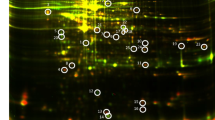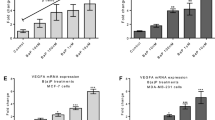Abstract
Epidemiological investigations have suggested that exposure to tobacco and environmental carcinogens increase the risk of developing human breast cancer. In light of the chronic exposure of human breast tissues to tobacco and environmental carcinogens, we have taken an approach of analyzing cellular changes of immortalized non-cancerous human breast epithelial MCF10A cells during the acquisition of cancerous properties induced by repeated exposure to the tobacco-specific carcinogen 4-(methylnitrosamino)-1-(3-pyridyl)-1-butanone (NNK) at a low concentration of 100 pM. We found that accumulated exposures of MCF10A cells to NNK result in progressive development of cellular carcinogenesis from a stage of immortalization to precancerous sub-stages of acquiring a reduced dependence on growth factors and acquiring anchorage-independent growth. Using Matrigel for MCF10A cells to form size-restricted acini, we detected that exposures to NNK resulted in altered acinar conformation. Analysis of gene expression profiles by cDNA microarrays revealed up- and down-regulated genes associated with NNK-induced carcinogenesis. Using this cellular carcinogenesis model as a target system to identify anticancer agents, we detected that grape seed proanthocyanadin extract significantly suppressed NNK-induced carcinogenesis of MCF10A cells. Our studies provide a carcinogenesis-cellular model mimicking the accumulative exposure to carcinogens in the progression of human breast epithelial cells to increasingly acquire cancerous properties, as likely occurs in the development of precancerous human breast cells. Our cellular model also serves as a cost-efficient, in vitro system to identify preventive agents that inhibit human breast cell carcinogenesis induced by chronic exposures to carcinogens.







Similar content being viewed by others
References
Guengerich FP (2000) Metabolism of chemical carcinogens. Carcinogenesis 21:345–351
Kelloff GJ, Hawk ET, Sigman CC (eds) (2005) Cancer chemoprevention. Human Press, NJ
Lichtenstein P, Holm NV, Verkasalo PK et al (2000) Environmental and heritable factors in the causation of cancer analyses of cohorts of twins from Sweden, Denmark, and Finland. N Engl J Med 343:78–85
Grover PL, Martin FL (2002) The initiation of breast and prostate cancer. Carcinogenesis 23:1095–1102
DeBruin LS, Josephy PD (2002) Perspectives on the chemical etiology of breast cancer. Environ Health Perspect 110(Suppl. 1):119–128
Hecht SS (2002) Tobacco smoke carcinogens and breast cancer. Environ Mol Mutagen 39:119–126
Gorlewska RK, Green B, Fares M et al (2002) Carcinogen-DNA adducts in human breast epithelial cells. Environ Mol Mutagen 39:184–192
Wogan GN, Hecht SS, Felton JS et al (2004) Environmental and chemical carcinogenesis. Seminars Cancer Biol 14:473–486
Reynolds P, Hurley S, Goldberg DE et al (2004) Active smoking, household passive smoking, and breast cancer: evidence from the California Teachers Study. J Natl Cancer Inst 96:29–37
Li D, Zhang W, Sahin AA, Hittelman WN (1999) DNA adducts in normal tissue adjacent to breast cancer: a review. Cancer Detect Prev 23:454–462
Barrett JC, Shelby MD (1992) Mechanisms of human carcinogens. Prog Clin Biol Res 374:415–434
Miller EC, Miller JA (1981) Mechanisms of chemical carcinogenesis. Cancer 147:1055–1064
O’Shaughnessy JA, Kelloff GJ, Gordon GB et al (2002) Treatment and prevention of intraepithelial neoplasia: an important target for accelerated new agent development. Clin Cancer Res 8:314–346
Sanders ME, Schuyler PA, Dupont WD, Page DL (2005) The natural history of low-grade ductal carcinoma in situ of the breast in women treated by biopsy only revealed over 30 years of long-term follow-up. Cancer 103:2481–2484
Hecht SS, Hatsukami DK, Bonilla LE, Hochalter JB (1999) Quantitation of 4-oxo-4-(3-pyridyl)butanoic acid and enantiomers of 4-hydroxy-4-(3-pyridyl)butanoic acid in human urine: a substantial pathway of nicotine metabolism. Chem Res Toxicol 12:172–179
Hecht SS, Carmella SG, Chen M et al (1999) Quantitation of urinary metabolites of a tobacco-specific lung carcinogen after smoking cessation. Cancer Res 59:590–596
Besaratinia A, Maas LM, Brouwer EM et al (2002) A molecular dosimetry approach to assess human exposure to environmental tobacco smoke in pubs. Carcinogenesis 23:1171–1176
Hecht SS (1996) Recent studies on mechanisms of bioactivation and detoxification of 4-(methylnitrosamino)-1-(3-pyridyl)-1-butanone (NNK), a tobacco specific lung carcinogen. Crit Rev Toxicol 26:163–181
Hecht SS (1999) Tobacco smoke carcinogens and lung cancer. J Natl Cancer Inst 91:1194–1210
Wu Z, Upadhyaya P, Carmella SG et al (2002) Disposition of 4-(methylnitrosamino)-1-(3-pyridyl)-1-butanone (NNK) and 4-(methylnitrosamino)-1-(3-pyridyl)-1-butanol (NNAL) in bile duct-cannulated rats: Steroselective metabolism and tissue distribution. Carcinogenesis 23:171–179
Chhabra SK, Anderson LM, Perella C et al (2000) Coexposure to ethanol with N-nitrosodimethylamine or 4-(Methylnitrosamino)-1-(3-pyridyl)-1-butanone during lactation of rats: marked increase in O(6)-methylguanine-DNA adducts in maternal mammary gland and in suckling lung and kidney. Toxicol Appl Pharmacol 169:191–200
Mei J, Hu H, McEntee M et al (2003) Transformation of noncancerous human breast epithelial cell MCF10A induced by the tobacco-specific carcinogen NNK. Breast Cancer Res Treat 79:95–105
Hanahan D, Weinberg RA (2000) The hallmarks of cancer. Cell 100:57–70
Schwab M (2001) Oncogene. In: Schwab M (ed) Encyclopedic reference of cancer. Springer-Verlag, New York, pp 649–652
Soule HD, Maloney TM, Wolman SR et al (1990) Isolation and characterization of a spontaneously immortalized human breast epithelial cell line, MCF-10. Cancer Res 50:6075–6086
Debnath J, Muthuswamy SK, Brugge JS (2003) Morphogenesis and oncogenesis of MCF-10A mammary epithelial acini grown in three-dimensional basement membrane cultures. Methods 30:256–268
Specht K, Kremer M, Müller U et al (2002) Quintanilla-Martinez L, and Fend F. Identification of Cyclin D1 mRNA Overexpression in B-Cell Neoplasias by Real-Time Reverse Transcription-PCR of Microdissected Paraffin Sections. Clin Cancer Res 8:2902–2911
Livak KJ, Schmittgen TD (2001) Analysis of relative gene expression data using real-time quantitative PCR and the 2−ΔΔCT Method. Methods 23:402–408
Yuan JS, Reed A, Chen F, Stewart CN (2006) Statistical analysis of real-time PCR data. BMC Bioinformatics 7:85
Fecteau KA, Mei J, Wang HCR (2002) Differential modulation of signaling pathways and apoptosis of ras-transformed 10T1/2 cells by the depsipeptide FR901228. J Pharmacol Exp Ther 300:890–899
Debnath J, Brugge JS (2005) Modelling glandular epithelial cancers in three-dimensional cultures. Nat Rev Cancer 5:675–688
Nelson CM, Bissell MJ (2005) Modeling dynamic reciprocity: engineering three-dimensional culture models of breast architecture, function, and neoplastic transformation. Semin Cancer Biol 15:342–352
Ye X, Krohn RL, Liu W et al (1999) The cytotoxic effects of a novel IH636 grape seed proanthocyanidin extract on cultured human cancer cells. Mol Cell Biochem 196:99–108
Bagchi D, Bagchi M, Stohs S et al (2002) Cellular protection with proanthocyanidins derived from grape seeds. Ann NY Acad Sci 957:260–270
Sharma G, Tyagi AK, Singh RP et al (2004) Synergistic anti-cancer effects of grape seed extract and conventional cytotoxic agent doxorubicin against human breast carcinoma cells. Breast Cancer Res Treat 85:1–12
Kim H, Hall P, Smith M et al (2004) Chemoprevention by grape seed extract and genistein in carcinogen-induced mammary cancer in rats is diet dependent. J Nutr 134:3445S–3452S
Cos P, De Bruyne T, Hermans N et al (2004) Proanthocyanidins in health care: current and new trends. Curr Med Chem 11:1345–1359
Ray SD, Bagchi D (2005) Roles of polyphenols, flavonoids, and oligomeric preoanthocyanidins. In: Bagchi D, Preuss HG (eds) Cancer chemoprevention. CRC Press, FL
Faria A, Calhau C, de Freitas V, Mateus N (2006) Procyanidins as antioxidants and tumor cell growth modulators. J Agric Food Chem 54:2392–2397
Safe S, Abdelrahim M (2005) Sp transcription factor family and its role in cancer. Eur J Cancer 41:2438–2448
Abdelrahim M, Baker CH, Abbruzzese JL, Safe S (2006) Tolfenamic acid and pancreatic cancer growth, angiogenesis, and Sp protein degradation. J Natl Cancer Inst 98:855–868
Chelouche-Lev D, Kluger HM, Berger AJ et al (2004) αB-crystallin as a marker of lymph node involvement in breast carcinoma. Cancer 100:2543–2548
Moyano JV, Evans JR, Chen F et al (2006) αB-Crystallin is a novel oncoprotein that predicts poor clinical outcome in breast cancer. J Clin Invest 116:261–270
Sasano H, Frost AR, Saitoh R et al (1997) Localization of mineralocorticoid receptor and 11 beta-hydroxysteroid dehydrogenase type II in human breast and its disorders. Anticancer Res 17(3C):2001–2007
Moggs JG, Murphy TC, Lim FL et al (2005) Anti-proliferative effect of estrogen in breast cancer cells that re-express ERα is mediated by aberrant regulation of cell cycle genes. J Mol Endocrinol 34:535–551
Bertucci F, Finetti P, Rougemont J (2005) Gene expression profiling identifies molecular subtypes of inflammatory breast cancer. Cancer Res 65:2170–2178
Walss-Bass C, Xu K, David S et al (2002) Occurrence of nuclear beta II-tubulin in cultured cells. Cell Tissue Res 308:215–223
Liu D, Rudland PS, Sibson DR et al (2000) Expression of calcium-binding protein S100A2 in breast lesions. Br J Cancer 83:1473–1479
Cheng M, Watson PH, Paterson JA et al (1997) Pro-protein convertase gene expression in human breast cancer. Int J Cancer 71:966–971
Pedersen N, Mortensen S, Sorensen SB et al (2003) Transcriptional gene expression profiling of small cell lung cancer cells. Cancer Res 63:1943–1953
Iwai K, Hirata K, Ishida T et al (2004) An anti-proliferative gene BTG1 regulates angiogenesis in vitro. Biochem Biophys Res Comm 316:628–635
Van der Heijden MC, Verhagen JN, Rijksen G et al (1986) Phosphofructokinase in normal thyroid tissue and thyroid neoplasms. Tumor Biol 7:9–18
Wilkinson S, Paterson HF, Marshall CJ (2005) Cdc42-MRCK and Rho-ROCK signalling cooperate in myosin phosphorylation and cell invasion. Nat Cell Biol 7:255–261
Murakami M, Nakashima K, Kamei D et al (2003) Cellular prostaglandin E2 production by membrane-bound prostaglandin E synthase-2 via both cyclooxygenase-1 and -2. J Biol Chem 278:37937–37947
Yoshida K, Miki Y (2004) Role of BRCA1 and BRCA2 as regulators of DNA repair, transcription, and cell cycle in response to DNA damage. Cancer Sci 95:866–871
Abaji C, Cousineau I, Belmaaza A et al (2005) BRCA2 regulates homologous recombination in response to DNA damage: implications for genome stability and carcinogenesis. Cancer Res 65:4117–4125
Russo J, Calaf G, Russo IH (1993) A critical approach to the malignant transformation of human breast epithelial cells with chemical carcinogens. Crit Rev Oncog 4:403–417
Calaf G, Russo J (1993) Transformation of human breast epithelial cells by chemical carcinogens. Carcinogenesis 14:483–492
Caruso JA, Reiners JJ Jr, Emond J et al (2001) Genetic alteration of chromosome 8 is a common feature of human mammary epithelial cell lines transformed in vitro with benzo[a]pyrene. Mutat Res 473:85–99
Naryan S, Jaiswal AS, Kang D et al (2004) Cigarette smoke condensate-induced transformation of normal human breast epithelial cells in vitro. Oncogene 23:5880–5889
Liu S, Lin YC (2004) Transformation of MCF-10A human breast epithelial cells by zeranol and estradiol-17beta. Breast J 10:514–521
Huggins C, Yang NC (1962) Induction and extinction of mammary cancer. A striking effect of hydrocarbons permits analysis of mechanisms of causes and cure of breast cancer. Science 137:257–262
Cavalieri E, Rogan E, Sinha D (1988) Carcinogenicity of aromatic hydrocarbons directly applied to rat mammary gland. J Cancer Res Clin Oncol 114:3–9
Oreffo VIC, Lin HW, Padmanabhan R, Witschi H (1993) K-ras and p53 point mutations in 4-(methylnitrosamino)-1-(3-pyridyl)-1-butanone-induced hamster lung tumors. Carcinogenesis 14:451–455
Matzinger SA, Gunning WT, You M, Castonguay A (1994) Ki-ras mutations in 4-(methylnitrosamino)-1-(3-pyridyl)-1-butanone-initiated and butylated hydroxytoluene-promoted lung tumors in A/J mice. Mol Carcinogenesis 11:42–48
Mehta RG (2000) Experimental basis for the prevention of breast cancer. Eur J Cancer 36:1275–1282
Acknowledgments
We are grateful to Dr. J. Wei for preparation of cell lines and Ms. M. Bailey for textual editing of the manuscript. Research described in this article was initially supported by a grant from the University of Tennessee, College of Veterinary Medicine, Center of Excellence in Livestock Diseases and Human Health (H-C. R. Wang), and was subsequently supported by Philip Morris USA Inc. and Philip Morris International (H-C. R. Wang).
Author information
Authors and Affiliations
Corresponding author
Rights and permissions
About this article
Cite this article
Siriwardhana, N., Choudhary, S. & Wang, HC.R. Precancerous model of human breast epithelial cells induced by NNK for prevention. Breast Cancer Res Treat 109, 427–441 (2008). https://doi.org/10.1007/s10549-007-9666-9
Received:
Accepted:
Published:
Issue Date:
DOI: https://doi.org/10.1007/s10549-007-9666-9




